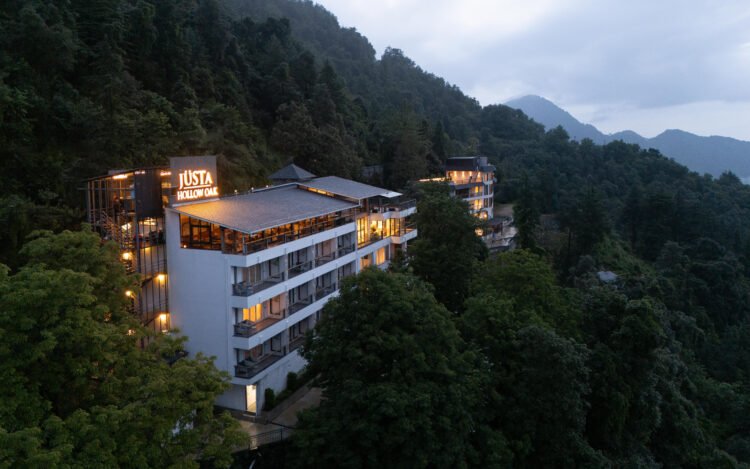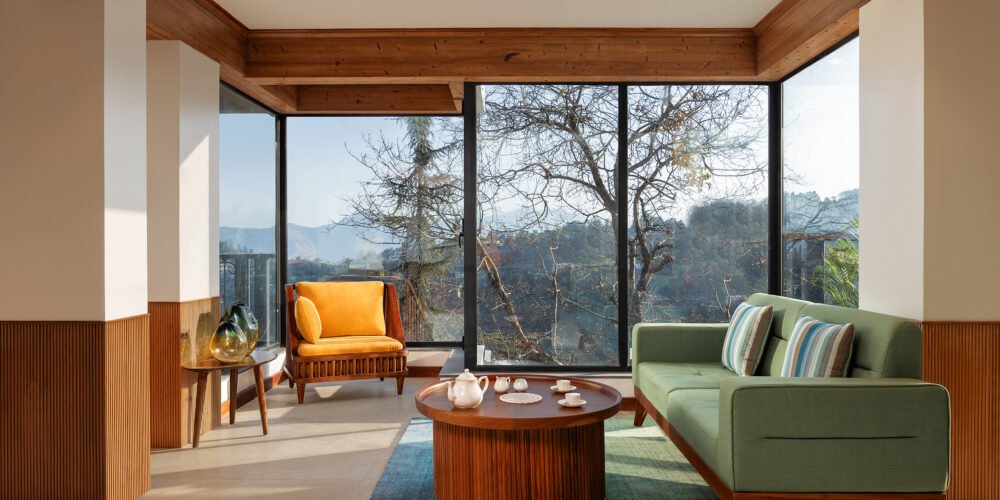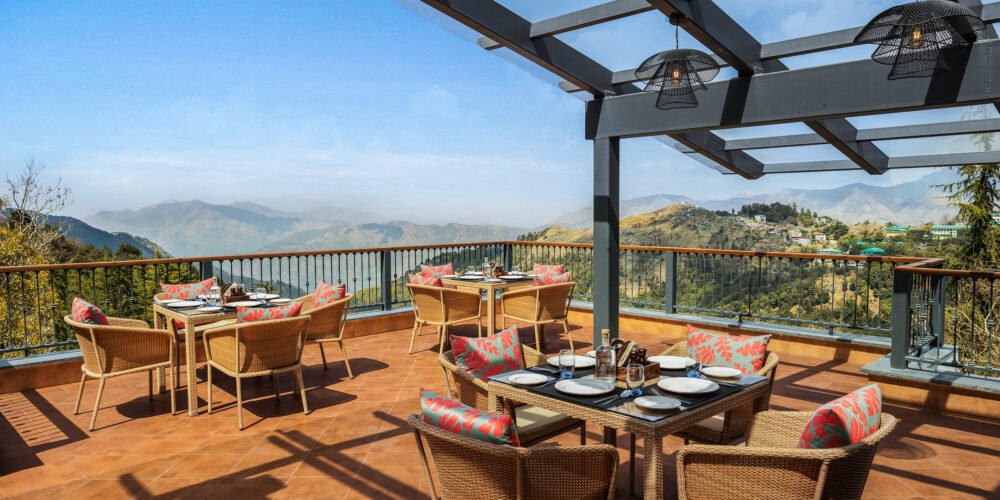No products in the cart.
Rediscovering Mussoorie In Festival Season
jüSTa Hollow Oak, Mussoorie’s new wing offers the perfect base to rediscover the Queen of the Hills
Mussoorie, the Queen of the Hills, has a way of slowing you down and inviting you into its folds of mist, pine-scented air, and mountain lore. Recently, Onora Hospitality’s jüSTa Hollow Oak opened the doors to its newly launched wing—16 thoughtfully designed rooms that let you wake up to Himalayan views, soak in a Jacuzzi, or stretch out in a private garden. It was here, perched amidst the quiet slopes of the hill station, that I checked in for a four-day journey blending comfort, culture, and the timeless charm of Mussoorie.
The first afternoon unfolded gently. After a welcome lunch—a hearty, homely Garhwali thali, spiced with the mountain air—I set out for the George Everest House. Once the residence of the man after whom Mount Everest is named, it is now a quiet museum. I lingered till the sun dipped behind the ridges, painting the sky in blush pinks and smoky oranges. Back at jüSTa Hollow Oak, dinner was a cozy affair, the night punctuated only by cicadas and soft mountain winds.
The next morning we had planned to drive to Lakhamandal, a temple complex steeped in myth and history. Dedicated to Lord Shiva, this remote site is linked to the Mahabharata, believed to have sheltered the Pandavas during their exile. But the weather played spoilsport and we headed to Landour instead.
Landour is Mussoorie’s quieter cousin, steeped in colonial heritage and literary echoes. At Landour Bakehouse, breakfast was as much about freshly baked bread and coffee as it was about soaking in the old-world charm of an erstwhile printing press. A walking tour revealed ivy-clad houses, stories of Ruskin Bond, and panoramic Himalayan vistas that seemed to stretch forever.
Lunch at Little Lama was a delightful detour into Tibetan flavors, followed by an afternoon exploring the Soham Himalayan Centre, an ode to mountain culture and art.
By evening, Mussoorie’s Mall Road beckoned with its colonial-era bustle—shops glowing with local handicrafts, cafés spilling warm light onto the streets, and the irresistible pull of the Cambridge Book Depot, an institution for bibliophiles, where the smell of paper feels like part of the hill station’s soul. This is where Ruskin Bond used to drop in regularly to sign copies of his books but age has caught up with him—although he still turns up on his birthday.
Later, a return to the hotel brought a barbecue dinner under the stars, the strum of a live guitarist making the night feel infinite.
Next day, with a cup of tea and the first call of birds, we set off on a Hidden Forest Trail. Here, the forest whispered its secrets: the eerie tales of Lambi Dehar Mines, once called one of India’s most haunted places, the quiet industry of a peanut butter factory tucked in the hills, and the rich biodiversity of Mussoorie’s woodlands.
In the afternoon, our explorations took us to the Cloud End Forest Resort, tucked at the very edge of Mussoorie where the town dissolves into wilderness. Here, surrounded by dense oak and deodar forests, the air felt untouched, almost primeval, as though the mountains themselves were exhaling in quiet relief. It was easy to imagine retreating here for days, losing all sense of time.
From there, the journey continued to Shedup Choepelling Temple, a Tibetan Buddhist monastery. This is where His Holiness the 14th Dalai Lama first sought refuge in India in 1959. The temple’s bright murals and fluttering prayer flags set against the deepening blue of the Himalayas carried an aura of resilience and peace.
As dusk fell, the hills turned dusky violet, and back at jüSTa Hollow Oak, a folk dance performance lit up the evening, tying together history, heritage, and celebration.
The final morning was perhaps the most magical. Savouring one last breakfast at jüSTa Hollow Oak, I felt that bittersweet pull of departure. The hills have a way of making you promise to return, and as the road unwound downhill, the memories of temples, trails, bookshops, and timeless sunsets seemed to fold themselves into the mist.
For Bookings pls login : https://bookings.justahotels.com/?chainId=10534&propertyId=10545



















